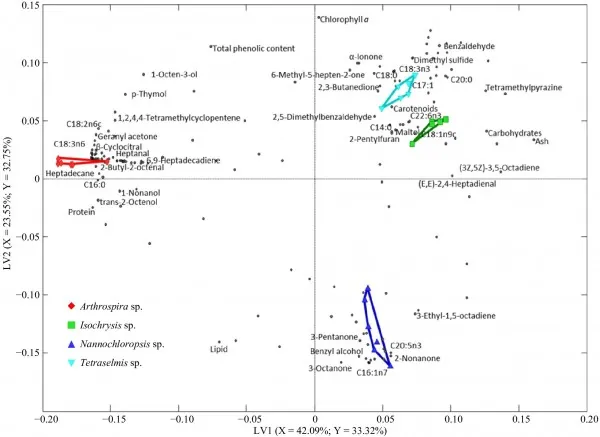
Unlocking the Potential of Microalgae: A Sustainable Future for Food and Pharmaceuticals?
2024-11-02
Author: Li
Unlocking the Potential of Microalgae: A Sustainable Future for Food and Pharmaceuticals?
Recent studies are shining a light on the incredible potential of microalgae as not just sustainable resources, but as powerhouses of nutrition and bioactive compounds that could revolutionize the food and pharmaceutical industries.
Microalgae are heralded for their nutrient-rich profiles, packed with essential proteins, lipids, and carbohydrates. These microscopic wonders could hold the key to addressing global challenges related to food sustainability and health. Yet, despite their promising applications, further research is vital to fully understand their suitability as food ingredients and functional additives.
A groundbreaking study published on April 22, 2024, titled "Functional Ingredients from Microalgae: A Comprehensive Study," dives deep into the chemical properties of several microalgal species including Arthrospira, Isochrysis, Nannochloropsis, and Tetraselmis. Utilizing advanced chemometric techniques, researchers meticulously analyzed the biomass for moisture content and compared critical constituents like lipids, proteins, carbohydrates, and pigments.
Interestingly, the findings reveal that lipid content varies significantly across these species, ranging from 8.80% to 17.62%. Nannochloropsis impressively boasts the highest concentration of lipids, which are primarily composed of healthy polyunsaturated fatty acids. On the protein front, Arthrospira stands tall with a whopping 57.92%, largely due to its abundant water-soluble phycobiliproteins. Tetraselmis shone in carbohydrate content, reaching 25.42%, while Isochrysis emerged as a leader in ash content and carotenoids with levels as high as 38.55%.
Pigment analysis unfolded more surprises: Isochrysis displayed optimal chlorophyll and carotenoid concentrations, rendering it a distinct yellow-brownish hue, while Nannochloropsis had lower pigment levels, attributed to its tough cell walls. What's more, the phenolic compounds present in Arthrospira and Isochrysis demonstrated robust antioxidant properties, hinting at their potential health benefits.
Dr. Biniam Kebede, the lead researcher of this avant-garde study, shared insights into the implications of these findings: "Our research not only highlights the significant diversity among microalgal species in terms of their nutritional benefits but also opens new avenues for their integration into specific food products and pharmaceutical solutions. This is crucial in tackling the pressing sustainability and health issues the world faces today."
The conclusions drawn from this extensive investigation underscore the versatility of microalgae, offering pathways for innovative food formulations and nutraceuticals that could reshape consumer choices in the quest for healthier, more sustainable food options.
As the food industry leans increasingly towards natural and sustainable ingredients, microalgae could very well be the star of the future. Could we be on the brink of a green revolution in our diets and health regimes? Only time will tell, but the evidence suggests that microalgae are ready to take center stage!
Stay tuned for more updates as we continue to explore the fascinating world of sustainable food innovations!




 Brasil (PT)
Brasil (PT)
 Canada (EN)
Canada (EN)
 Chile (ES)
Chile (ES)
 España (ES)
España (ES)
 France (FR)
France (FR)
 Hong Kong (EN)
Hong Kong (EN)
 Italia (IT)
Italia (IT)
 日本 (JA)
日本 (JA)
 Magyarország (HU)
Magyarország (HU)
 Norge (NO)
Norge (NO)
 Polska (PL)
Polska (PL)
 Schweiz (DE)
Schweiz (DE)
 Singapore (EN)
Singapore (EN)
 Sverige (SV)
Sverige (SV)
 Suomi (FI)
Suomi (FI)
 Türkiye (TR)
Türkiye (TR)